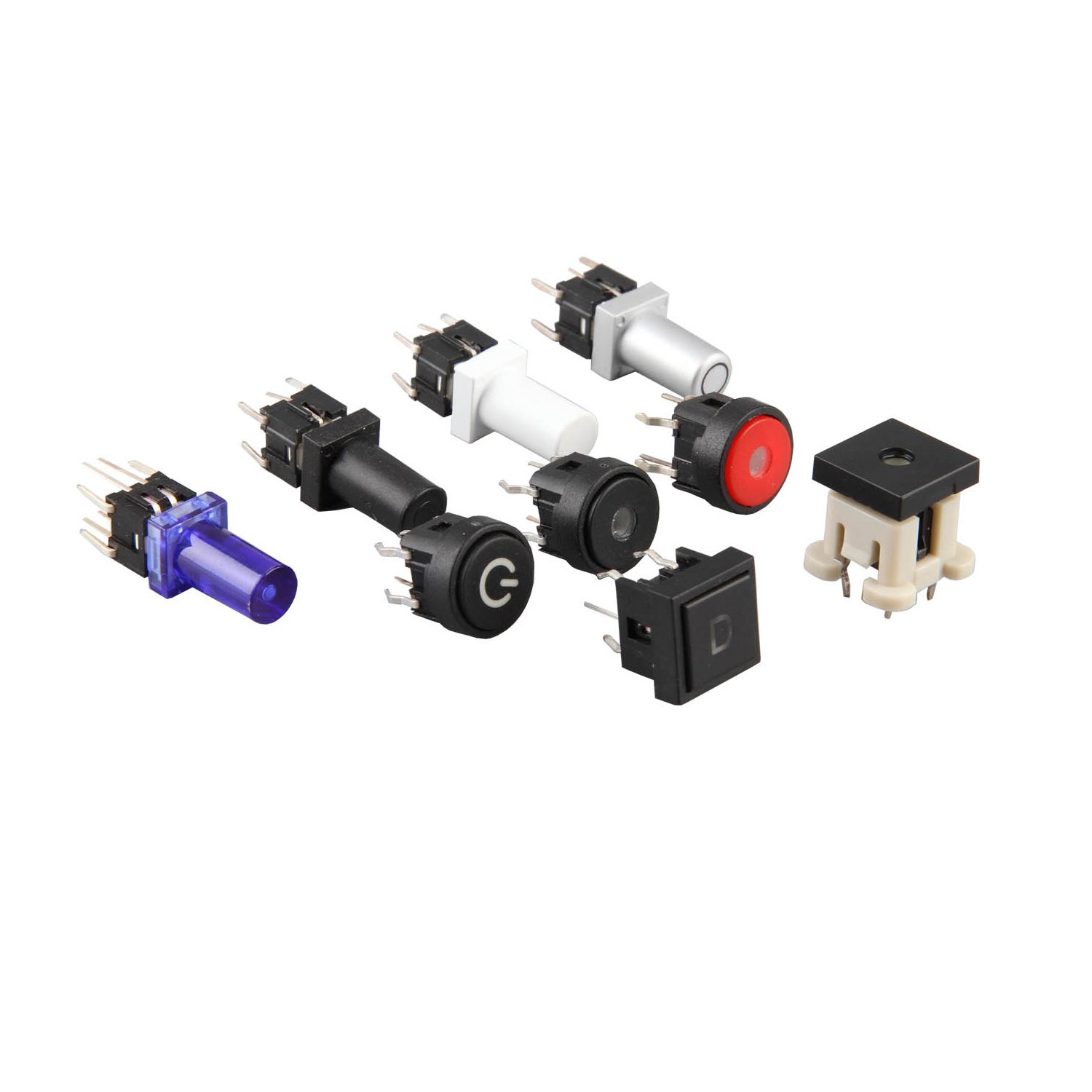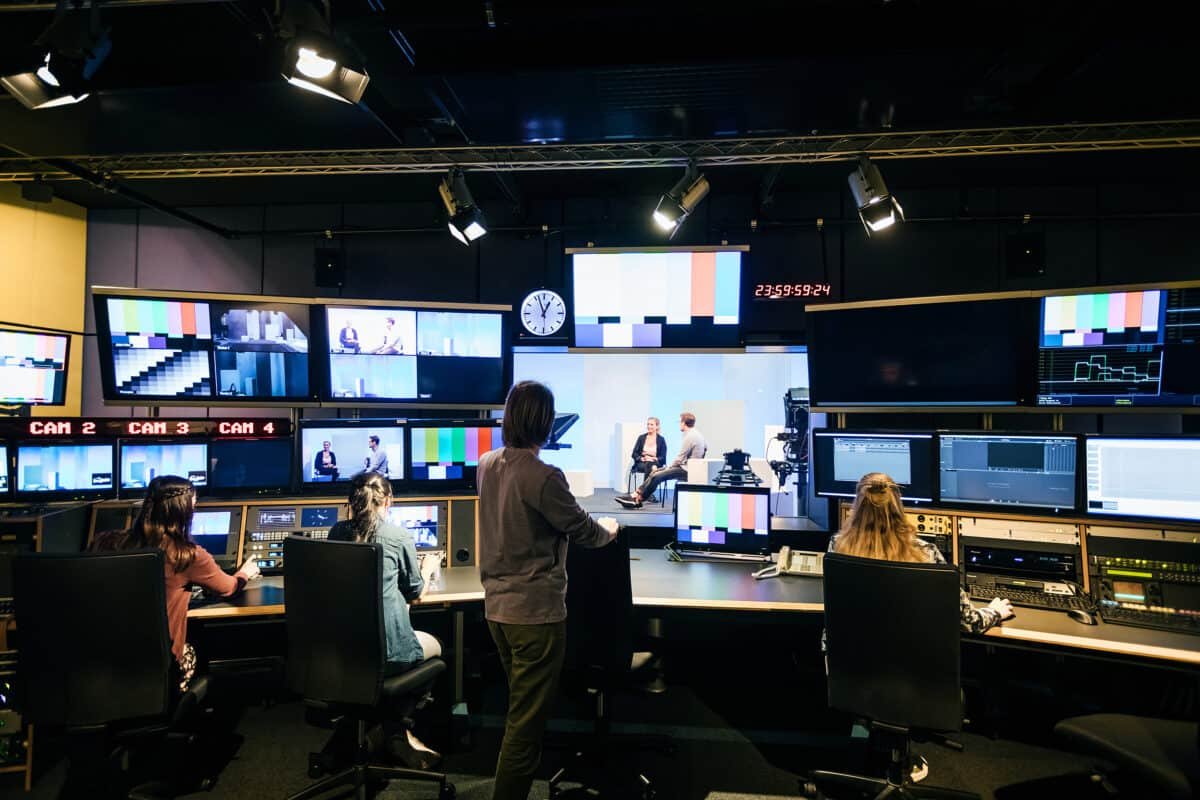QUICK LINKS: View all LED Illuminated Switches
What are LED-illuminated switches?
An LED-illuminated switch is a push-button switch that includes a built-in LED light. This LED serves two main purposes: it makes the switch visible in low light and indicates the switch’s status (like on or off). These switches are energy-efficient, durable, and come in various colors. They’re widely used in electronics, industrial machines, and control panels for both functionality and aesthetic appeal.
According to the functional characteristics of LED-illuminated switches, we can divide them into the following types.
- Momentary LED Switches: These switches light up only when pressed and return to their original state once released. They’re commonly used in keyboards, control panels, and where temporary actions are needed.
- Latching LED Switches: These maintain their state after being pressed—either staying lit or turning off until pressed again. They’re used in applications where a sustained function, like power on/off, is required.
- Bi-Color or Multi-Color LED Switches: These switches can display multiple colors, indicating different statuses or functions. They’re useful in complex control systems where multiple conditions need to be indicated.
- Dimmable LED Switches: They allow the adjustment of the LED’s brightness, suitable for environments where variable lighting is desired.
- Waterproof LED Switches: Designed for outdoor or harsh environments, these switches are resistant to water and other elements.
- Customizable LED Switches: Some switches offer customizable features like changeable LED colors, blinking patterns, or programmable functions.
- Capacitive Touch LED Switches: These are touch-sensitive switches that light up upon touch, often used in modern, sleek designs like smart home devices.
According to the design of LED illuminated switches and the feedback they provide, we can roughly divide them into LED push button switches and LED tactile switches.





- Design: This is a simple switch mechanism that allows current to flow when pressed and breaks the circuit when released. Push button switches come in various forms like momentary or latching types.
- Feedback: Push button switches may or may not provide tactile feedback. When pressed, some will have a noticeable click or resistance, while others might be smooth without any noticeable feedback.
- Uses: They are used in a wide range of applications, from simple household devices to complex machinery.






- Design: Tactile switches are a type of momentary switch that is designed to give a physical ‘click’ sensation when pressed. They are smaller and more compact than most push button switches.
- Feedback: The key feature of tactile switches is the tactile feedback they provide. When you press a tactile switch, you can feel a distinct snap or click, indicating the activation of the switch.
- Uses: Tactile switches are commonly used in applications where physical feedback is important for the user, like keyboards, control panels, and handheld devices.
LED-illuminated button switches offer several advantages:
- Visibility: The integrated LED improves visibility, making the switch easy to locate and use, especially in low-light conditions.
- Status Indication: The LED can indicate the status of the switch (on or off) or the device it controls, providing clear feedback to the user.
- Aesthetic Appeal: These switches have a modern and stylish appearance, enhancing the overall design of the device or control panel.
- Energy Efficiency: LEDs consume less power and have a longer lifespan compared to traditional bulbs, making these switches more energy-efficient and durable.
- Color Variety: LEDs come in various colors, allowing for customization and color-coding of functions.
- Versatility: LED illuminated button switches are suitable for a wide range of applications, from consumer electronics to industrial machinery.
- User Experience: The illumination can improve the user experience, making interaction with the device more intuitive and satisfying.
LED-illuminated button switches are used in a wide range of applications due to their visibility, durability, and user-friendly design.
Some common application scenarios include:
- Consumer Electronics: Devices like audio systems, televisions, and gaming consoles for easy operation in low-light conditions.
- Industrial Control Panels: For machinery and equipment controls, where clear indication and reliable operation are crucial.
- Automotive: In-car dashboards and control systems for visibility and ease of use.
- Medical Equipment: On various medical devices where precision and clear feedback are essential.
- Home Appliances: On microwaves, washing machines, and other appliances for ease of use and modern aesthetics.
In the context of the broadcasting and television industry, LED-illuminated button switches have several specific applications:
- Control Consoles: In broadcasting studios, these switches are used on control panels and mixing desks to indicate active channels, and power status, or to cue certain actions. The clear visibility and status indication are vital in a fast-paced studio environment.
- Camera Controls: On professional cameras and related equipment, illuminated switches help operators quickly identify and control various functions, especially in low-light settings like studios or outdoor evening shoots.
- Editing Suites: In post-production, these switches are used on editing consoles and audio mixing boards, providing clear visual cues and enhancing the overall efficiency of the editing process.
- Outside Broadcasting Vans: In mobile broadcasting units, these switches are crucial for operating various equipment quickly and accurately in different lighting conditions.
In all these applications, the LED-illuminated button switches enhance usability, efficiency, and safety, which are key factors in the broadcasting and television field.





